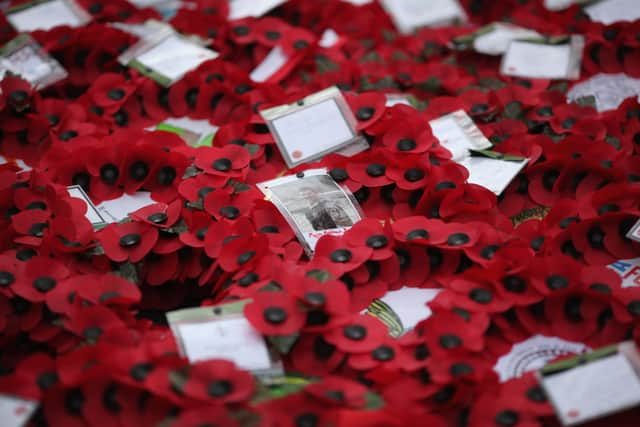Remembrance Day 2022: when was it first commemorated, when is Remembrance Sunday, and why do we wear a poppy?
This article contains affiliate links. We may earn a small commission on items purchased through this article, but that does not affect our editorial judgement.
and live on Freeview channel 276
Remembrance Day is a time of national reflection as we remember those who have fought and paid the ultimate sacrifice for us in conflicts of the past. The day has grown into an annual day of solemn remembrance for those caught up in some of the most horrendous man-made events in human history.
The day is marked on November 11, whilst Remembrance Sunday falls on the Sunday closest to November 11. In 2022, this is Sunday November 13.
Advertisement
Hide AdAdvertisement
Hide AdAccording to the Royal British Legion, the timing of the period of silence has its origins based over a century ago. At 11am on November 11, 1918, the First World War drew to a close. Millions of people had died on both sides, and a peace agreement was signed bringing the bloodshed to an end.
At this time, a pre-arranged Armistice came into effect and for the next weeks and months, a detailed peace settlement was worked out by leaders of the Allied nations. After four years of war, peace broke out around the world.
Each November 11 since, a period of silence has been marked at 11am to reflect on the sacrifice made by soldiers in the trenches of the First World War and those of other conflicts since.
Why do we wear a poppy?
The universal symbol of Armistice Day and Remembrance Sunday is the poppy. A red and black flower which has come to symbolise the hopelessness of war and the importance of remembering those who paid the ultimate price.
Advertisement
Hide AdAdvertisement
Hide AdBy the end of the First World War large areas of Belgium and Northern France, where much of the fighting took place, had been reduced to a desolate wasteland. Whole villages and communities had been almost completely wiped from the face of the earth, and there were barely any signs of life.
However, through so much of the destruction, grew a sign of hope. In Flanders, an area of Belgium which saw some of the most brutal fighting, bright red poppies grew from the seemingly uninhabitable ground. From this, the poppy became a sign of hope. Proof that, even after the most hellish experience, life could prosper and go forth.


Following the end of the war, there was a drive to have the poppy seen as the universal symbol of remembrance. In 1921, the Royal British Legion bought nine million poppies and sold them on Remembrance Day. This first ‘Poppy Appeal’ sold out and raised £106,000 which was used to support veterans from the First World War. The Royal British Legion has raised over £100 million since this first poppy appeal.
